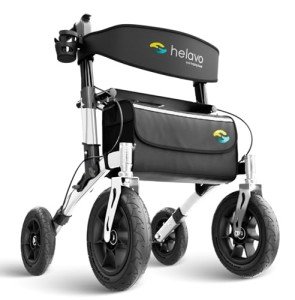It's The Ugly Truth About Brake Walker
The Brake Walker: Revolutionizing Vehicle Safety and Performance
In the ever-evolving landscape of automotive technology, safety and performance stay the 2 paramount issues for motorists and makers alike. One innovative solution that has actually gotten significant traction in the last few years is the Brake Walker system. This article dives into the complexities of Brake Walker technology, illuminating its benefits, functionalities, and future capacity while resolving some regularly asked questions.
What is a Brake Walker?
The term “Brake Walker” refers to an advanced car function developed to improve braking performance, enhance automobile handling, and boost total safety throughout various driving conditions. My Mobility Scooters aims to provide motorists with higher control over their vehicles, whether on damp surfaces, inclines, or in emergency situation situations.
Table 1: Key Features of Brake Walker Technology
Feature
Description
Automated Braking
System detects the needed braking force and adjusts appropriately.
Slip Control
Monitors wheel slip and supplies optimum stopping power.
Adaptive Performance
Changes braking action based on driving conditions and practices.
Chauffeur Feedback
Supplies real-time feedback to boost motorist self-confidence.
Integration with ABS
Functions along with existing Anti-lock Braking System (ABS) for optimum performance.
How Does Brake Walker Work?
At its core, the Brake Walker system includes sensing units, algorithms, and advanced braking elements to deliver exceptional performance. When engaged, the system constantly evaluates different specifications, consisting of:
- Wheel speed: Determines how quickly each wheel is rotating.
- Roadway conditions: Uses sensing units to evaluate surface dampness, slope, and other aspects.
- Driver input: Analyzes braking patterns and intentions based on foot pressure on the pedal.
By incorporating this information, the Brake Walker can automatically regulate braking force, mitigating the chance of wheel lockup or skidding and successfully bringing the vehicle to a safe stop.
Table 2: Components of the Brake Walker System
Component
Function
Sensing units
Identify wheel speed, surface area conditions, and motorist inputs.
ECU (Electronic Control Unit)
Processes data and enhances braking performance.
Braking Mechanism
Engages and disengages brakes based on priority conditions.
User Interface
Offers feedback and system status to the chauffeur.
Benefits of Brake Walker Technology
The application of Brake Walker systems features a myriad of benefits that have the prospective to boost both safety and performance on the roadway. Here are the noteworthy benefits:
1. Improved Safety
A top feature of Brake Walker technology is its capability to avoid skidding and loss of control, especially during negative weather. This safety feature is essential in decreasing the possibility of mishaps.
2. Improved Performance
By enhancing braking force, the Brake Walker system not just enhances stopping power but likewise contributes to total car handling. Drivers can experience greater confidence in their vehicle's responsiveness.
3. Increased Comfort
This technology offers a smoother braking experience, lessening abrupt stops and enhancing traveler comfort.
4. Adaptive Learning
The Brake Walker can learn motorist habits with time, changing its reactions accordingly to supply tailored driving assistance.
5. Integrated Systems
Brake Walker technology works seamlessly with existing automobile systems, such as ABS, guaranteeing extensive safety and performance improvements without the need for a total overhaul.
Regularly Asked Questions (FAQ)
Q1: Is Brake Walker technology readily available in all cars?
A1: Currently, Brake Walker technology is more commonly discovered in higher-end models and newer vehicles. However, as vehicle technology advances, it is anticipated to be integrated into more designs throughout the board.
Q2: How does Brake Walker compare to traditional braking systems?
A2: While traditional braking systems rely exclusively on the motorist's input, the Brake Walker system utilizes advanced algorithms and sensors to optimize braking performance, drastically minimizing the opportunity of accidents and enhancing overall car control.
Q3: Can Brake Walker be retrofitted to older lorries?
A3: Retrofitting Brake Walker systems into older car models can be technically challenging and might not always be possible. It is suggested for car owners to seek advice from vehicle experts for compatibility before pursuing installation.
Q4: Are there upkeep requirements for Brake Walker systems?
A4: Like all automotive systems, Brake Walker technology might require routine checks and upkeep to ensure optimal performance. It's recommended to follow manufacturer guidelines for examinations and maintenance.
Q5: Will utilizing Brake Walker effect fuel economy?
A5: While Brake Walker technology optimizes braking performance, there is little evidence to suggest it considerably affects fuel economy. Nevertheless, improved braking can lead to smoother driving patterns, which might indirectly enhance fuel efficiency.
The Brake Walker system presents a significant improvement in car safety and performance technology. With its ability to adjust to driver behavior and roadway conditions, it promises to redefine how drivers engage with their vehicles. As this technology continues to establish and incorporate into more cars, it forces automotive manufacturers and consumers alike to reconsider their techniques to driving safety and performance.
By accepting developments like the Brake Walker, the vehicle market takes a significant step toward a safer, more efficient, and confident driving experience for everyone on the road. As technology advances, the hope is for widespread adoption, causing a future with less mishaps and improved driving convenience.
Contact us to Action
For those thinking about enhancing their automobile's security features, it might be time to consult their local automobile dealerships about the latest improvements in Brake Walker technology and other safety-enhancing systems.
